Simon Guerrier's Blog, page 66
December 20, 2016
Trailer for The Sontarans
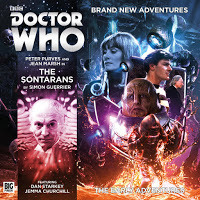 Doctor Who - The Sontarans
is out now from Big Finish, detailing the first encounter between the Doctor and those potato-headed monstrosities. It stars Peter Purves and Jean Marsh, and I did the typing.
Doctor Who - The Sontarans
is out now from Big Finish, detailing the first encounter between the Doctor and those potato-headed monstrosities. It stars Peter Purves and Jean Marsh, and I did the typing.Clever Tom Saunders at Big Finish has also engineered this extraordinary trailer. Mneh, mneh, mneh - most exciting.
Published on December 20, 2016 11:31
December 10, 2016
Dinosaur Island at Crystal Palace
As regular sufferers of this blog will know, I've long been in love with the dinosaur sculptures at Crystal Place, built in the 1850s. Today, the clever Dr had booked us in to a rare trip onto the island so we could get up close to the lovely, cumbersome beauties.
The pictures below show the amazing efforts of the conservation team - and how much they still have to do. So if you like these pictures, fling money at the Friends of Crystal Palace Dinosaurs conservation page. You're welcome to reproduce the images I took, but ideally make a donation to the friends, and credit the pictures to me.
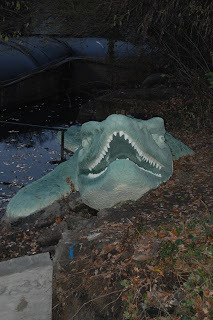 Mosasaurus
Mosasaurus
Note the second set of teeth inside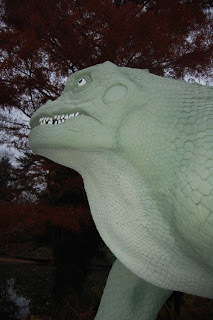 Iguanadon
Iguanadon
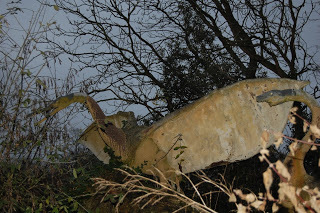 Pteradactylus x2
Pteradactylus x2
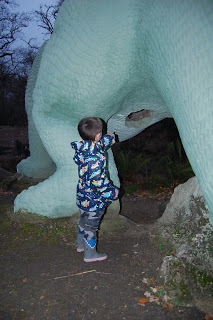 Lord of Chaos inspecting Iguandon's bum
Lord of Chaos inspecting Iguandon's bum
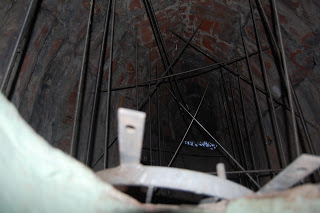 Inside brick-built Iguanadon
Inside brick-built Iguanadon
(This is where they put the steam motor in my story)
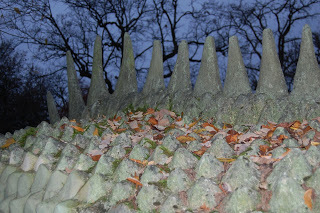 Hylaeosaurus spines
Hylaeosaurus spines
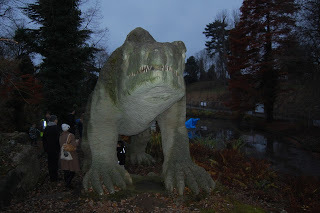 Megalosaurus
Megalosaurus
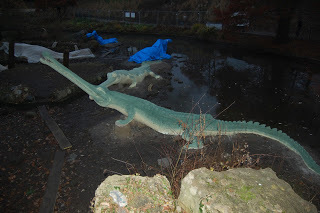 Teleosaurus x2, and Christmas presents
Teleosaurus x2, and Christmas presents
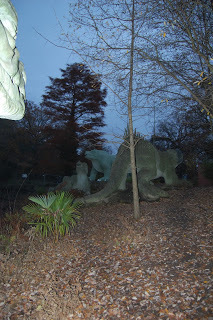 Megalosaurs eyeing up Hylaeosaurus
Megalosaurs eyeing up Hylaeosaurus
and 2x Iguanadon
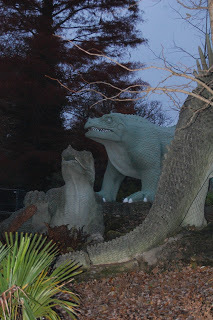 Iguanadons chillax
Iguanadons chillax
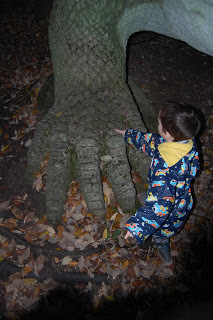 The relative sizes of claws
The relative sizes of claws
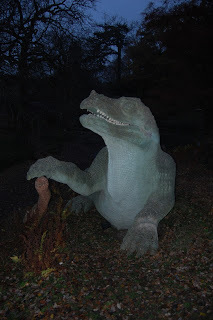 Iguanadon, mid anecdote
Iguanadon, mid anecdote
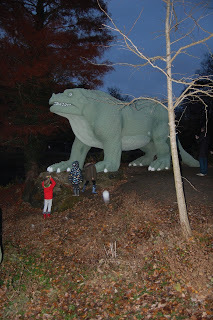 An Iguanadon, surrounded by lunch
An Iguanadon, surrounded by lunch
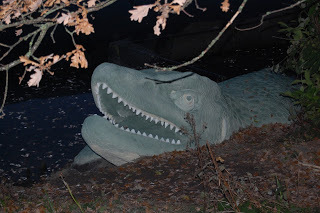 Mosasaurus waving us goodbye - note those secondary teeth
Mosasaurus waving us goodbye - note those secondary teeth
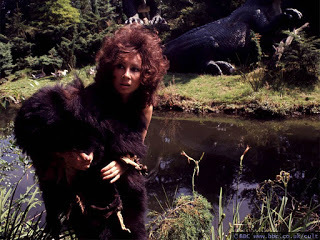 The Dr, in her best clothesSee also Doctor Who in Crystal Palace.
The Dr, in her best clothesSee also Doctor Who in Crystal Palace.
The pictures below show the amazing efforts of the conservation team - and how much they still have to do. So if you like these pictures, fling money at the Friends of Crystal Palace Dinosaurs conservation page. You're welcome to reproduce the images I took, but ideally make a donation to the friends, and credit the pictures to me.
 Mosasaurus
MosasaurusNote the second set of teeth inside
 Iguanadon
Iguanadon Pteradactylus x2
Pteradactylus x2 Lord of Chaos inspecting Iguandon's bum
Lord of Chaos inspecting Iguandon's bum Inside brick-built Iguanadon
Inside brick-built Iguanadon(This is where they put the steam motor in my story)
 Hylaeosaurus spines
Hylaeosaurus spines Megalosaurus
Megalosaurus Teleosaurus x2, and Christmas presents
Teleosaurus x2, and Christmas presents Megalosaurs eyeing up Hylaeosaurus
Megalosaurs eyeing up Hylaeosaurusand 2x Iguanadon
 Iguanadons chillax
Iguanadons chillax The relative sizes of claws
The relative sizes of claws Iguanadon, mid anecdote
Iguanadon, mid anecdote An Iguanadon, surrounded by lunch
An Iguanadon, surrounded by lunch Mosasaurus waving us goodbye - note those secondary teeth
Mosasaurus waving us goodbye - note those secondary teeth The Dr, in her best clothesSee also Doctor Who in Crystal Palace.
The Dr, in her best clothesSee also Doctor Who in Crystal Palace.
Published on December 10, 2016 10:06
December 5, 2016
Graceless IV cast and crew
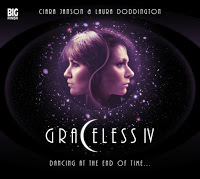 "Dancing at the end of time," proclaims the newly released cover for Graceless IV, the artwork by Anthony Lamb.
"Dancing at the end of time," proclaims the newly released cover for Graceless IV, the artwork by Anthony Lamb.The new series, comprising four one-hour plays that I've written, is out next month and available to pre-order.
Buy Graceless IV from Big FinishHere are the full details:
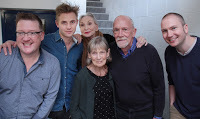 4.1 The Bomb
4.1 The Bomb
There's a legend told in a town by the sea, about two wicked sisters who died to save the world. Now the world faces another catastrophe and there's no one to turn to for help. Which is bad news for Joy and Amy, and their grandchildren...
4.2 The Room
Buried under steel and iron and concrete, and protected by high security, there's a secret room. From here, General Onora Cormorant directs the Gloit forces as they wage war across the whole planet. But stopping the war will take much more than just getting into that room...
4.3 The Ward
For more than a decade, Space Dock has had an exemplary health and safety record, not least because of the wicked sisters working in its hospital, bringing the dead back to life. But what are they really doing there, and what's it got to do with one poor nurse's love life?
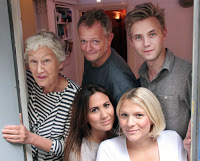 4.4 The Dance
4.4 The Dance
In the flood and the fire,
In the heart of the sun,
We were lost, we were dying,
We have only begun,
And the rest of the song,
Remains to be sung,
So we'll dance through the night,
And the dawn never comes,
Just the two of us.
NOTE: Graceless contains some adult material and is not suitable for younger listeners.
Written By: Simon Guerrier
Directed By: Lisa Bowerman CastCiara Janson (Abby), Laura Doddington (Zara) Annie Firbank (Amy), Siân Phillips (Joy), Adam Newington (Pool), Hugh Ross (Dodyk), Victoria Alcock (Marcella), Jennie Goossens (Judge Engin), Annie Jackson (Kronchev), Nichola McAuliffe (Comorant), Carol Starks (Slink), Petra Markham (Annie), Carolyn Pickles (Gutierrez), Dan Starkey (Chaff), Richenda Carey (Triangle), David Sterne (Oblong), Duncan Wisbey (Graves). Other parts played by members of the cast.
Published on December 05, 2016 02:01
December 4, 2016
Off air images from The Evil of the Daleks
For my forthcoming book on 1967 Doctor Who story The Evil of the Daleks, I undertook some especially nerdy investigation.
Of the seven episodes of the story, only episode 2 exists in the BBC archive, but from the other six episodes there are a total of 414 off-air photographs (that is, taken of the story playing out on a screen, rather than on set during production). There are four main sources of these images:
383 "tele-snaps" taken by John Cura - most of them published as a "photonovel" on the BBC Doctor Who website as a "photonovel", and in Doctor Who Magazine's special, The Missing Episodes - The Second Doctor Volume Two26 photographs from episode 1 taken by the story's designer, Chris Thompson and published in issue three of fanzine Nothing at the End of the Lane in 20122 photographs from episode 4 and 1 photograph from episode 5 taken by fan Terry Reason, published in Doctor Who Magazine #200 in 1993, and again in Nothing at the End of the Lane #3.2 photographs from episode 5 taken by fan Gordon Lengden and now in the posession of Tony Clark, again published in Nothing at the End of the Lane #3Here are three things I've tried to do with these images to better understand The Evil of the Daleks.
1. THE SEQUENCE OF THE OFF-AIR IMAGES
We know the order in which to view the tele-snaps because they were printed in strips, and we know the order of Chris Thompson's images because the negatives still exist - again, in strips - so it's easy to follow the sequence. But how do we work out the order when we put both sets of images together?
A useful aid is the camera scripts - that is, the scripts detailing how the cameras should cover the action, as used in the studio recording of the episodes. The camera scripts for this story are included on the CD soundtrack in the box-set Doctor Who: The Lost TV Episodes - Collection Four .
As an example, scene 4 of episode 1 is set in the study of an antique shop and according to the camera script began with a tracked-out close-up shot of Waterfield through a magnifying glass.
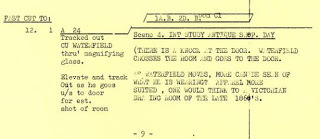
A tele-snap shows this, the magnifying glass filling the middle of the lower half of the frame, obscuring Waterfield’s mouth and nose as we look at him face on:
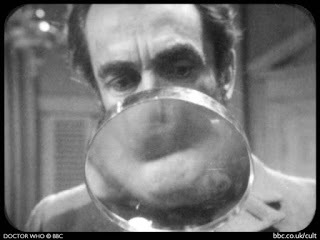
The script says there was then a knock on the door, and the camera was to elevate and track out as Waterfield went to answer it, providing the first establishing shot of the room. That’s what we see in the first of Chris Thompson’s images: a wide shot of the room full of antiques, Waterfield with his back to us as he bends to unlock the double doors in the centre of frame:
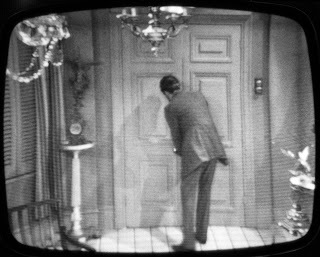
We can see Waterfield from head to toe, but with his back to us it’s not clear from this image – as it is in the script – that he’s wearing Victorian clothes. Note that the dialogue in the scene doesn’t refer to what he is wearing: it’s a visual clue to him being out of his own time, bolstered by Waterfield’s later, spoken, mix-up over guineas and pounds.
The next tele-snap is from a moment later: the same camera position but with the door now open. Waterfield has stepped back and to the right, and is in profile as he faces Keith Perry:
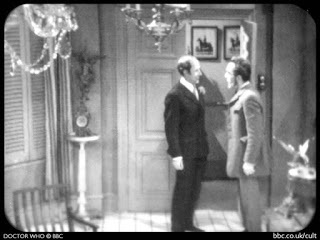
The next tele-snap is a close two-shot of Perry and Waterfield as Perry admires an antique that’s apparently just off the left-hand edge of frame. The camera script says this is a clock on Waterfield’s desk, but Waterfield’s desk is visible on the other side of the room. The dialogue doesn’t say ‘clock’, so Perry might be admiring something else.
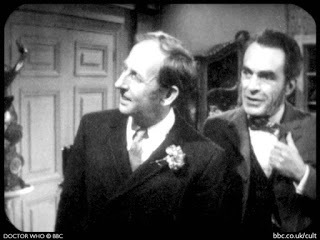
Thompson’s next photograph shows Perry in roughly the same position, but Waterfield some distance behind him, on the other side of his desk:
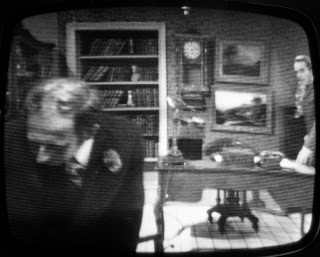
This is almost identical to the next tele-snap, except Perry is bent a little lower to examine whatever antique is just out of shot, and Waterfield is slightly further left behind the desk – the suggestion being that after the previous tele-snap he moved right, off the edge of frame, and then came into shot again behind the desk.
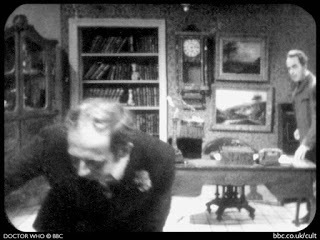
Again, the next of Thompson’s images is almost identical to the next tele-snap, looking down on Perry as he seems to admire the room’s chandelier, and it’s difficult to tell which of the two images comes first. So we need another clue...
The last of Thompson’s images from this scene still has Perry gazing upwards at the chandelier, but we can also see Waterfield standing behind his desk. Since that suggests the camera has pulled back and to the left since the previous two images, we can perhaps work out the order by comparing the position of the leg of Waterfield’s desk to Perry’s shoulder. In the tele-snap, the leg is some distance from Perry; in Thompson’s similar image, Perry’s arm just obscures the very end of the leg; in Thompson’s next image the leg is completely behind him. So, watch the position of the table leg adjacent to Perry's arm:
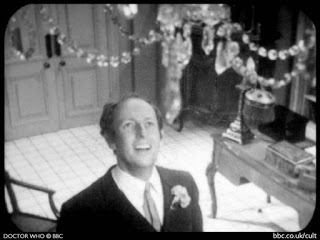
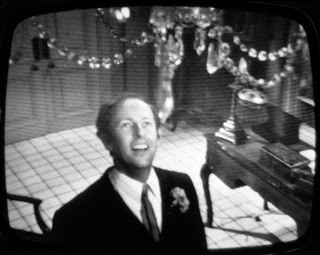
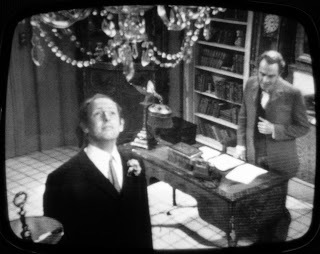
2. HOW MUCH THE SURVIVING EPISODE 2 HAS BEEN CROPPED
When The Evil of the Daleks was made, the episodes were recorded on two-inch videotape. None of those original recordings survive, but a copy of episode 2 made on 16mm film is held by the BBC, and was used for the commerical releases on VHS and DVD.
To make a 16mm copy from the two-inch videotape in the first place, a film camera was positioned in front of a screen on to which the episode was played from the tape. As Richard Molesworth explains in his brilliant book, Wiped! Doctor Who’s Missing Episodes (Second Edition), ‘the 16mm film recordings were slightly zoomed in ... to ensure that the edges of the screen were never captured’ (pp. 273-4). This means that the existing 16mm episode is a slightly cropped version of the original. Can the off-air photographs tell us how much has been cropped?
Here are two comparisons from the beginning of episode 2, in which a character called Kennedy is cornered by a Dalek.
Top left: a screengrab from the repeat of this sequence in 1968 story The Wheel in Space episode 6 - where it's shown on the TARDIS scanner screen.Top right: a screengrab from episode 2 of The Evil of the Daleks, as featured on the Lost in Time DVD box set.Bottom left: John Cura's tele-snap, care of Doctor Who Magazine.Bottom right: John Cura's tele-snap, care of the photonovel on the BBC Doctor Who website.In this first image, the tele-snaps at the bottom show a slight gap between the top of his head and the upper edge of the frame, while in the episode on DVD the very top of his head is out of frame. The bottom right-hand corner of the tele-snap crops Kennedy’s hand, slightly more of which is visible in the episode.
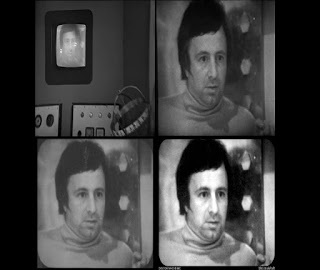
In this second comparison, we can see more of the upper-most hexagon on the panel behind Kennedy than we can in the episode:
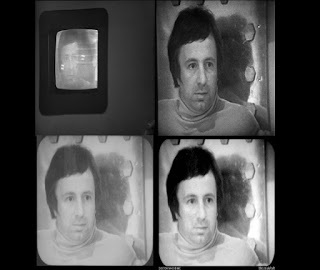
Overall, it’s about 2% from the top and about 1% of the bottom from the total height of the tele-snaps. But when I put this to Steve Roberts, of the Doctor Who Restoration Team which prepared the episode for DVD, he said that:
3. ANIMATING THE OFF-AIR IMAGES
Lastly, in several cases, two separate off-air images are almost identical - some where John Cura took two "tele-snaps" in very quick succession, and other where two photographers happened to capture the same instant.
But that means we return something of the missing story to life:
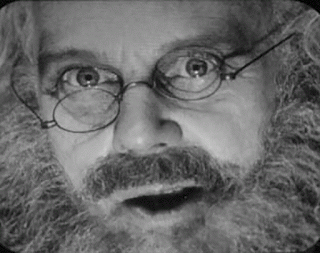 Thanks to Simon Belcher for technical brilliance, Tom Spilsbury and Peter Ware at
Doctor Who Magazine
and Richard Bignell at Nothing at the End of the Lane for sharing images, and Steve Roberts for his patience in untangling my muddled thinking.
Thanks to Simon Belcher for technical brilliance, Tom Spilsbury and Peter Ware at
Doctor Who Magazine
and Richard Bignell at Nothing at the End of the Lane for sharing images, and Steve Roberts for his patience in untangling my muddled thinking.
Of the seven episodes of the story, only episode 2 exists in the BBC archive, but from the other six episodes there are a total of 414 off-air photographs (that is, taken of the story playing out on a screen, rather than on set during production). There are four main sources of these images:
383 "tele-snaps" taken by John Cura - most of them published as a "photonovel" on the BBC Doctor Who website as a "photonovel", and in Doctor Who Magazine's special, The Missing Episodes - The Second Doctor Volume Two26 photographs from episode 1 taken by the story's designer, Chris Thompson and published in issue three of fanzine Nothing at the End of the Lane in 20122 photographs from episode 4 and 1 photograph from episode 5 taken by fan Terry Reason, published in Doctor Who Magazine #200 in 1993, and again in Nothing at the End of the Lane #3.2 photographs from episode 5 taken by fan Gordon Lengden and now in the posession of Tony Clark, again published in Nothing at the End of the Lane #3Here are three things I've tried to do with these images to better understand The Evil of the Daleks.
1. THE SEQUENCE OF THE OFF-AIR IMAGES
We know the order in which to view the tele-snaps because they were printed in strips, and we know the order of Chris Thompson's images because the negatives still exist - again, in strips - so it's easy to follow the sequence. But how do we work out the order when we put both sets of images together?
A useful aid is the camera scripts - that is, the scripts detailing how the cameras should cover the action, as used in the studio recording of the episodes. The camera scripts for this story are included on the CD soundtrack in the box-set Doctor Who: The Lost TV Episodes - Collection Four .
As an example, scene 4 of episode 1 is set in the study of an antique shop and according to the camera script began with a tracked-out close-up shot of Waterfield through a magnifying glass.

A tele-snap shows this, the magnifying glass filling the middle of the lower half of the frame, obscuring Waterfield’s mouth and nose as we look at him face on:

The script says there was then a knock on the door, and the camera was to elevate and track out as Waterfield went to answer it, providing the first establishing shot of the room. That’s what we see in the first of Chris Thompson’s images: a wide shot of the room full of antiques, Waterfield with his back to us as he bends to unlock the double doors in the centre of frame:

We can see Waterfield from head to toe, but with his back to us it’s not clear from this image – as it is in the script – that he’s wearing Victorian clothes. Note that the dialogue in the scene doesn’t refer to what he is wearing: it’s a visual clue to him being out of his own time, bolstered by Waterfield’s later, spoken, mix-up over guineas and pounds.
The next tele-snap is from a moment later: the same camera position but with the door now open. Waterfield has stepped back and to the right, and is in profile as he faces Keith Perry:

The next tele-snap is a close two-shot of Perry and Waterfield as Perry admires an antique that’s apparently just off the left-hand edge of frame. The camera script says this is a clock on Waterfield’s desk, but Waterfield’s desk is visible on the other side of the room. The dialogue doesn’t say ‘clock’, so Perry might be admiring something else.

Thompson’s next photograph shows Perry in roughly the same position, but Waterfield some distance behind him, on the other side of his desk:

This is almost identical to the next tele-snap, except Perry is bent a little lower to examine whatever antique is just out of shot, and Waterfield is slightly further left behind the desk – the suggestion being that after the previous tele-snap he moved right, off the edge of frame, and then came into shot again behind the desk.

Again, the next of Thompson’s images is almost identical to the next tele-snap, looking down on Perry as he seems to admire the room’s chandelier, and it’s difficult to tell which of the two images comes first. So we need another clue...
The last of Thompson’s images from this scene still has Perry gazing upwards at the chandelier, but we can also see Waterfield standing behind his desk. Since that suggests the camera has pulled back and to the left since the previous two images, we can perhaps work out the order by comparing the position of the leg of Waterfield’s desk to Perry’s shoulder. In the tele-snap, the leg is some distance from Perry; in Thompson’s similar image, Perry’s arm just obscures the very end of the leg; in Thompson’s next image the leg is completely behind him. So, watch the position of the table leg adjacent to Perry's arm:



2. HOW MUCH THE SURVIVING EPISODE 2 HAS BEEN CROPPED
When The Evil of the Daleks was made, the episodes were recorded on two-inch videotape. None of those original recordings survive, but a copy of episode 2 made on 16mm film is held by the BBC, and was used for the commerical releases on VHS and DVD.
To make a 16mm copy from the two-inch videotape in the first place, a film camera was positioned in front of a screen on to which the episode was played from the tape. As Richard Molesworth explains in his brilliant book, Wiped! Doctor Who’s Missing Episodes (Second Edition), ‘the 16mm film recordings were slightly zoomed in ... to ensure that the edges of the screen were never captured’ (pp. 273-4). This means that the existing 16mm episode is a slightly cropped version of the original. Can the off-air photographs tell us how much has been cropped?
Here are two comparisons from the beginning of episode 2, in which a character called Kennedy is cornered by a Dalek.
Top left: a screengrab from the repeat of this sequence in 1968 story The Wheel in Space episode 6 - where it's shown on the TARDIS scanner screen.Top right: a screengrab from episode 2 of The Evil of the Daleks, as featured on the Lost in Time DVD box set.Bottom left: John Cura's tele-snap, care of Doctor Who Magazine.Bottom right: John Cura's tele-snap, care of the photonovel on the BBC Doctor Who website.In this first image, the tele-snaps at the bottom show a slight gap between the top of his head and the upper edge of the frame, while in the episode on DVD the very top of his head is out of frame. The bottom right-hand corner of the tele-snap crops Kennedy’s hand, slightly more of which is visible in the episode.

In this second comparison, we can see more of the upper-most hexagon on the panel behind Kennedy than we can in the episode:

Overall, it’s about 2% from the top and about 1% of the bottom from the total height of the tele-snaps. But when I put this to Steve Roberts, of the Doctor Who Restoration Team which prepared the episode for DVD, he said that:
"The amount of image crop in a film recording is variable. Mostly you’ll find that there is more cropped from the top than the bottom – as demonstrated in your comparisons ... The film recorder camera had to ideally pull-down the next frame – pulling out the registration pins, accelerating it from stationary, decelerating it back to stationary and putting in the registration pins again – in the 1.6 milliseconds of video field blanking. This was extremely difficult and in practice it wasn’t actually possible to do it, which would result in distortion at the top of the image as the first few lines were being recorded to film as the film was still settling to stationary. To avoid this distorted area being seen on subsequent projection, the film recorder would blank the first few lines of the picture so that they were never recorded to film.So the existing episode is missing material from the top and bottom of the frame, but we can’t be sure how much is missing, and some of it might have been missing on the original two-inch videotape.
There are so many variables. Cura’s monitor would be over-scanned too, there would be some overscan and blanking in the film recorded as discussed and there’s always some overscan at the telecine stage – where film recorded on location is played into the studio recording of the episode – to avoid the ragged edges of picture appearing in the video frame."
3. ANIMATING THE OFF-AIR IMAGES
Lastly, in several cases, two separate off-air images are almost identical - some where John Cura took two "tele-snaps" in very quick succession, and other where two photographers happened to capture the same instant.
But that means we return something of the missing story to life:
 Thanks to Simon Belcher for technical brilliance, Tom Spilsbury and Peter Ware at
Doctor Who Magazine
and Richard Bignell at Nothing at the End of the Lane for sharing images, and Steve Roberts for his patience in untangling my muddled thinking.
Thanks to Simon Belcher for technical brilliance, Tom Spilsbury and Peter Ware at
Doctor Who Magazine
and Richard Bignell at Nothing at the End of the Lane for sharing images, and Steve Roberts for his patience in untangling my muddled thinking.
Published on December 04, 2016 08:57
November 25, 2016
On Radio New Zealand
Last night, I was a guest on Nine to Noon with Kathryn Ryan for Radio New Zealand, talking about my books Whographica, The Scientific Secrets of Doctor Who and being a classically trained nerd.
You can listen to the full interview at Who's Who in the Whovian's Whoniverse?
You can listen to the full interview at Who's Who in the Whovian's Whoniverse?
Published on November 25, 2016 01:18
November 16, 2016
A first for power
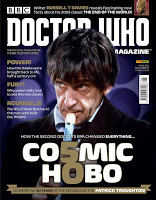 The super new issue of
Doctor Who Magazine
, out tomorrow, celebrates 50 years of the Second Doctor, as played by Patrick Troughton.
The super new issue of
Doctor Who Magazine
, out tomorrow, celebrates 50 years of the Second Doctor, as played by Patrick Troughton.It includes my full feature on the making of the new animated version of his first story, The Power of the Daleks, for which I spoke to producer and director Charles Norton, artists Mike Collins, Martin Geraghty and Adrian Salmon, and Paul Hembury - director of entertainment talent at BBC Worldwide, who commissioned the animation. There's even a word or two from Troughton himself, thanks to a recording made on 21 March 1986 by Jeff Lyons.
Also in the issue is a preview of my forthcoming audio, The Sontarans , in which the Doctor meets the potato-headed horde for the very first time. And, completely unrelated to me, there's some extremely exciting news about who is writing for the TV series on next year - which I won't spoil here because the magazine isn't out yet. But eep!
Published on November 16, 2016 04:52
November 15, 2016
Dr on Today yesterday
Yesterday, the Dr was up early to get to BBC Broadcasting House, where she was a guest on Today and talked to John Humphrys about Different Perspectives: Archaeology and the Middle East in WWI - a Heritage Lottery Fund project looking into the lives and stories of great archaeologists who became spies during the war.
The Dr was there representing the Petrie Museum of Egyptian Archaeology, and was interviewed alongside Dr Roderick Bailey, a historian specialising in unconventional warfare in the world wars.
You can hear the segment 2:41:15 into the Today programme of 14 November 2016.
The Dr was there representing the Petrie Museum of Egyptian Archaeology, and was interviewed alongside Dr Roderick Bailey, a historian specialising in unconventional warfare in the world wars.
You can hear the segment 2:41:15 into the Today programme of 14 November 2016.
Published on November 15, 2016 01:36
November 14, 2016
Siân Phillips and Annie Firbank
Annie Firbank and Dame Siân Phillips are the new Abby and Zara in the fourth series of my science-fiction series Graceless, due out from Big Finish in January.
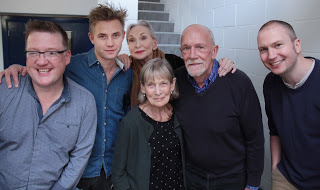
This picture shows producer Mark Wright, and the cast of one of the four new episodes - Adam Newington, Siân Phillips, Annie Firbank, Hugh Ross - plus some grinning eejit. I did get to chat to Siân about I, Claudius; alas, I didn't get to enthuse about how much I'm still haunted by her burning Kyle MacLachlan's hand in Dune.
The cast of the new series also includes Petra Markham (Ace of Wands), Carolyn Pickles (Broadchurch, Harry Potter) and Nichola McCauliffe (Doctor Who, Victoria) and features the most amazing song. More details to follow in due course. But I am still that grinning eejit.
Big Finish news: the new Abby and ZaraBuy Graceless IV from Big Finish

This picture shows producer Mark Wright, and the cast of one of the four new episodes - Adam Newington, Siân Phillips, Annie Firbank, Hugh Ross - plus some grinning eejit. I did get to chat to Siân about I, Claudius; alas, I didn't get to enthuse about how much I'm still haunted by her burning Kyle MacLachlan's hand in Dune.
The cast of the new series also includes Petra Markham (Ace of Wands), Carolyn Pickles (Broadchurch, Harry Potter) and Nichola McCauliffe (Doctor Who, Victoria) and features the most amazing song. More details to follow in due course. But I am still that grinning eejit.
Big Finish news: the new Abby and ZaraBuy Graceless IV from Big Finish
Published on November 14, 2016 03:05
October 31, 2016
Invasions of Earth
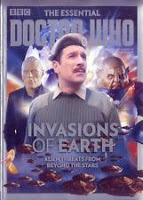 The new issue of The Essential Doctor Who is out now, devoted to Invasions of Earth - Alien Threats from Beyond the Stars. It includes some of my typing.
The new issue of The Essential Doctor Who is out now, devoted to Invasions of Earth - Alien Threats from Beyond the Stars. It includes some of my typing."I think Anat was one of the first women in uniform to be seen leading a gang on television," Anna Barry told me about her part in Day of the Daleks (1972). She also explained how a nearly fatal car crash helped her to be cast.
"The Doctor knows what he's talking about, at least for 1974..." says paleontologist Dr Dave Hone who I made watch Invasion of the Dinosaurs with its famously realistic-looking model effects. Ahem. Dave is the author of the brilliant The Tyrannosaur Chronicles and I'm still haunted by the talk I saw him give in 2013 on the "Planet of the Dinosaurs", with its vivid imagery of chicken-sized, feathered dinsoaurs running through magnolia blossom and between rhododendons.
Pamela Salem, David Richardson and John Dorney told me about making spin-off series Counter-Measures as "audio in black and white".
And Toby Whithouse explained how he spent his childhood "hoping and praying" that his school would be invaded by monsters.
Published on October 31, 2016 02:58
October 29, 2016
A letter from David Whitaker
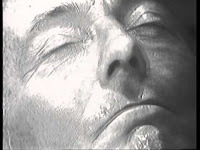 50 years ago today on 29 October 1966, Patrick Troughton made his debut as the Second Dr. Who in the closing moments of The Tenth Planet episode 4. His first full story, The Power of the Daleks, began the following week. It was written by David Whitaker.
50 years ago today on 29 October 1966, Patrick Troughton made his debut as the Second Dr. Who in the closing moments of The Tenth Planet episode 4. His first full story, The Power of the Daleks, began the following week. It was written by David Whitaker.Also on 29 October 1966, David Whitaker was at the annual general meeting of the Writers Guild of Great Britain, where among the topics under discussion were "fair reward[s] for writers of education programmes" and writers being "asked to bear in mind parts for women", plus the election of a new executive council. As the Stage reported on 3 November:
“In the election of officers, David Whitaker was unanimously elected to the chair, with R Vernon Beste re-elected as deputy chairman. Councillors elected were Denis Norden, Wilfred Greatorex, Zita Dundas, Vince Powell, John Lucarotti, Lew Greiffer, John Boland and George Markstein.”Also in November, guild members received Writers News with an introduction from the new chair - an editorial Whitaker wrote each issue for the next 18 months in his role.
The Stage #4464 and Television Today #403, 3 November 1966, p. 9.
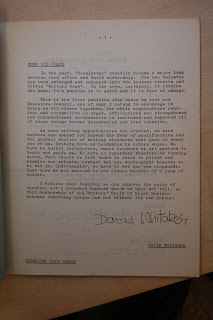
Thanks to Bernie Corbett, Anne Hogben and Emma Reeves at the Writers Guild of Great Britain for permission to dig through the guild archives, and to share what I found. More of this to come...
Published on October 29, 2016 01:21
Simon Guerrier's Blog
- Simon Guerrier's profile
- 60 followers
Simon Guerrier isn't a Goodreads Author
(yet),
but they
do have a blog,
so here are some recent posts imported from
their feed.



